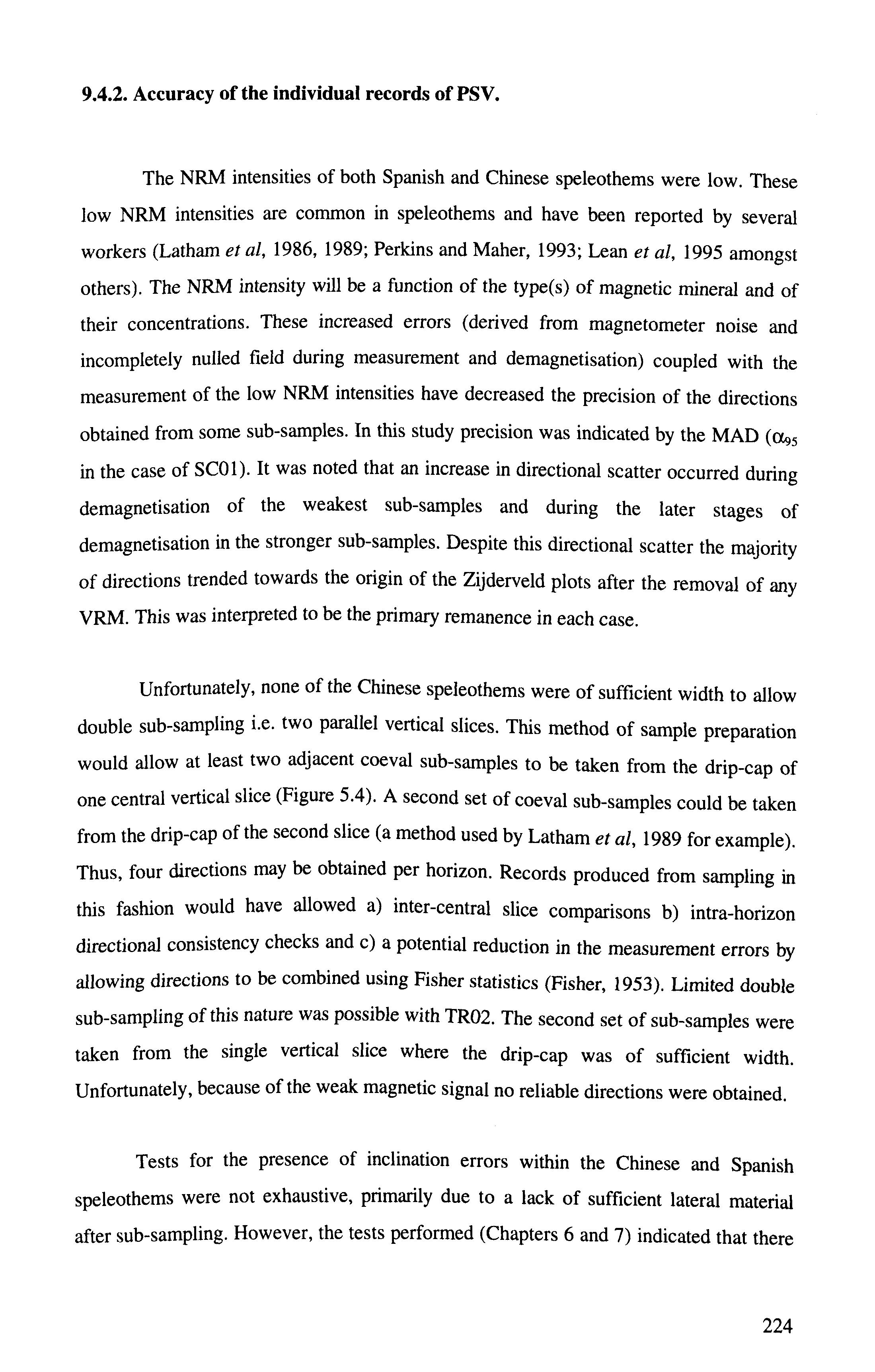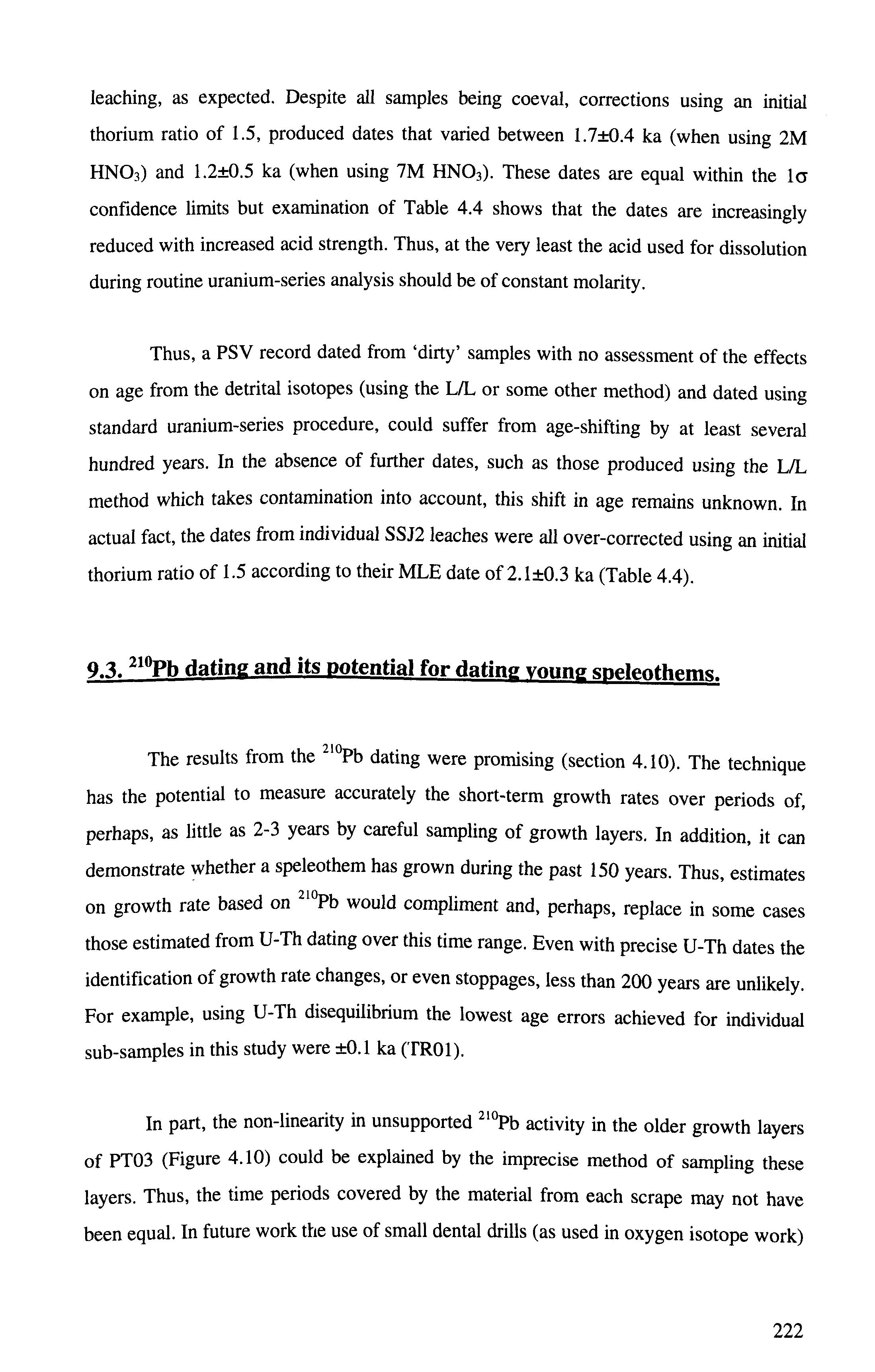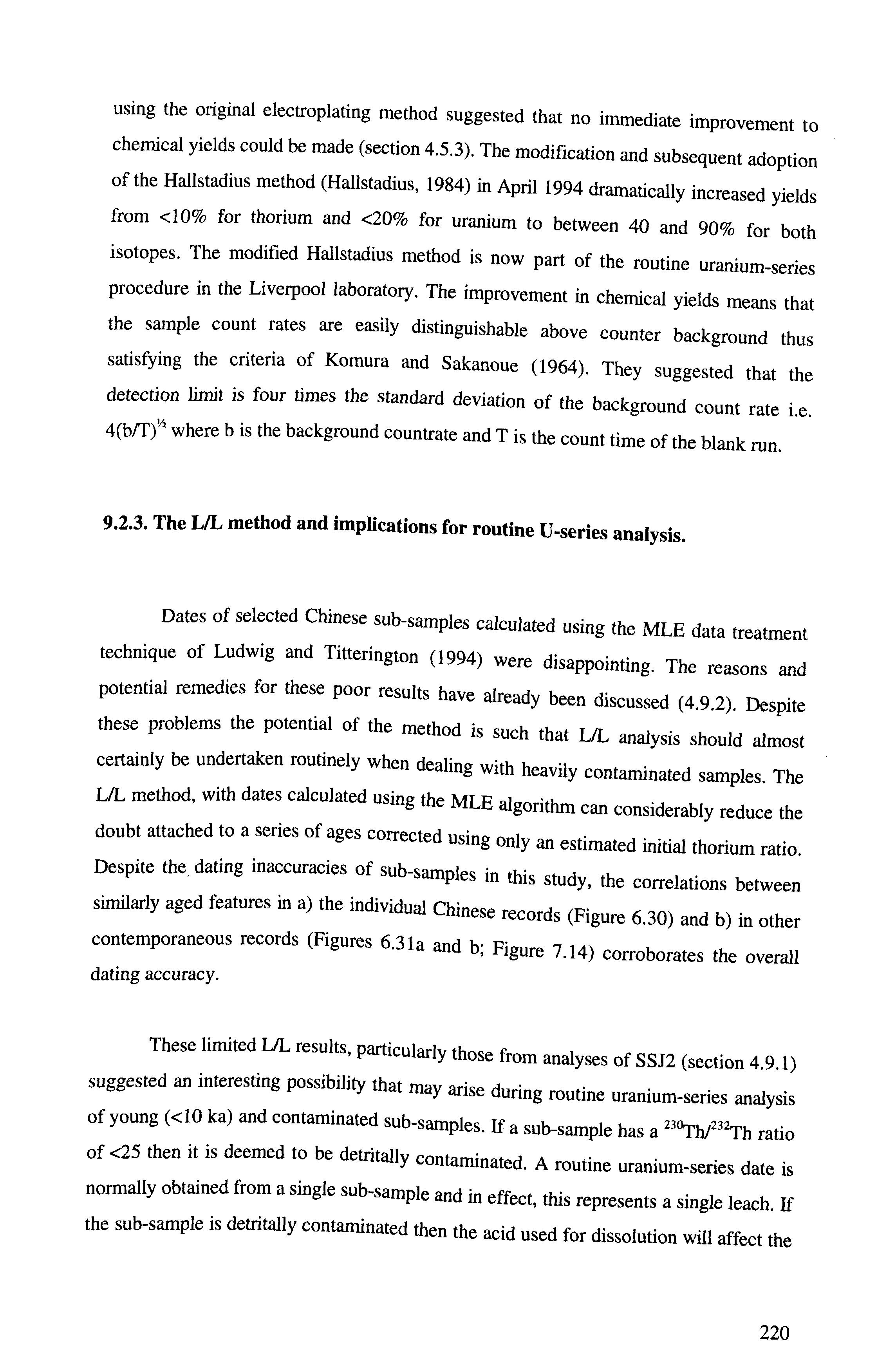
1 minute read
9.1. Introduction
9. Conclusions and the potential for future work.
9.1. Introduction.
Advertisement
This study has successfully produced contemporaneous records of PSV from
Chinese speleothems, and somewhat less successfully, from Spanish speleothems. The high degree of inter-correlation between the Chinese records and other
contemporaneous, non-speleothem records have unequivocally shown that speleothem PSV records reflect true palaeomagnetic field behaviour. As previous studies have
concentrated on producing individual speleothem records, the specific analysis of
multiple speleothems from single localities has remained incompletely explored. To quote
Latham (1981);
A fu ll assessment., will only be finalised with the production o f other overlapping or contemporaneous (speleothem) records'.
Thus, this study has probably gone some way to further promote the value of speleothem PSV records as a viable alternative, and as a compliment, to records derived from
sediments. Although sediments frequently suffer from depositional and sampling effects
speleothems do not and their freedom from depositional effects has been demonstrated
again in this study. However, the records produced from especially the Spanish
speleothems illustrate again the main problem in using speleothems to gain information
on PSV. This is the problem of low magnetic mineral concentrations giving rise to weak and immeasurable magnetic remanences. Nevertheless, the one reasonable record produced from Spanish speleothem AG02 compared well with the UK lake sediment master curve of Turner and Thompson (1981). Thus, there continues to be some luck associated with collecting suitable speleothems for both palaeomagnetic and uranium- series dating work. However, in these cost conscious days, sampling of speleothems for studies on PSV is faster and requires much less logistical support when compared with most sediment coring (cavers are usually cheap and run on alcohol!). However,








